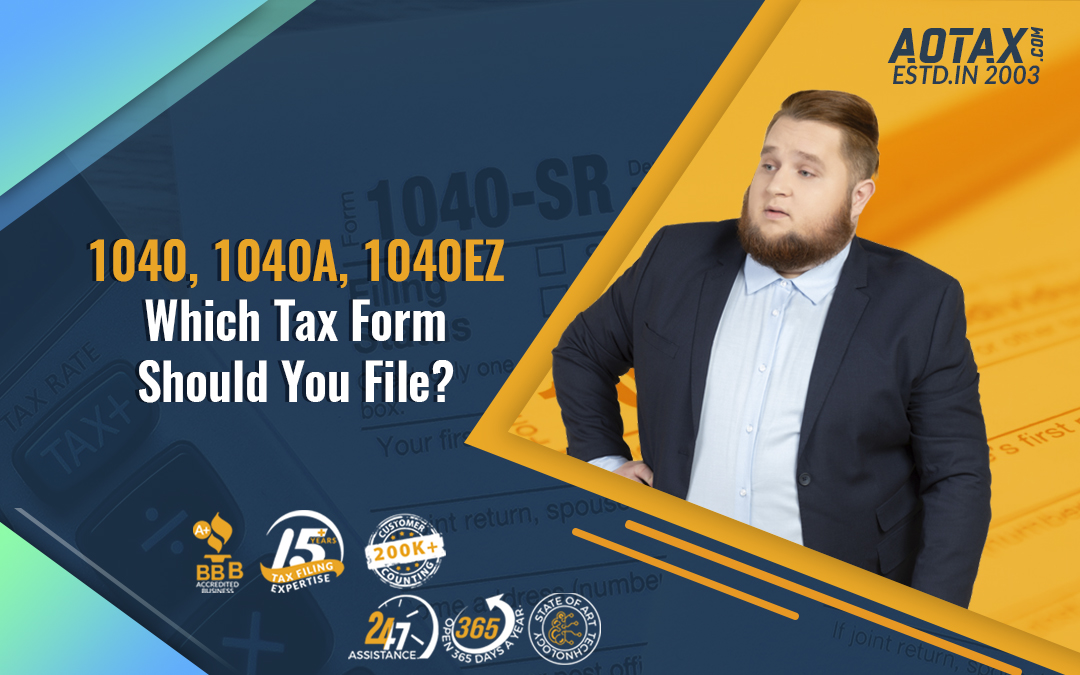1040, 1040A, 1040EZ Which Tax Form Should You File?
When it comes to federal income tax filing, there are three forms available for filing the returns IRS Form 1040, IRS Form 1040A and IRS Form 1040EZ. And this is the part that confuses most Americans, which form to choose. Each form has a different purpose and different set of requirements as well.
The easiest of them all is 1040EZ, as it is the shortest and the simplest. The 1040A follows it with bit more details and the 1040 tops the list with complexity and length of the form as well. Anyone can go ahead and use the form 1040. But to use 1040A and 1040EZ you need to meet certain criteria.
If you are still filling out forms on paper, it is advisable to use the simplest as it calls for fewer errors and subsequently faster processing.
1040EZ
This is the simplest translation of Form 1040, but it has some minor drawbacks as well. For an instance, you cannot make adjustments to income (apart from Earned Income Tax Credit) or itemize your deductions. 1040EZ also does not have any provisions for alimony, dividends, capital gains or money from self-employment.
To use 1040EZ, you should be ticking off all of the following check points:
- A taxable income that is less than $100,000.
- You have a single or married filing jointly as your filing status.
- You do not have any dependents.
- Your (and your spouse’s if married filing jointly) age is below 65 years on 1 January for the year for which you are filing taxes.
- You should not be blind for the year you are filing your taxes.
- A taxable interest of $1500 or lower.
- Boxes 5 and 7 of the W-2 form contains all the tips received (if any).
- Your source of income is one of the following:
- Salary
- Wage
- Tips
- Alaska Permanent Fund dividends
- Scholarship or university grants
- Compensation for unemployment
- There are no pending household employment taxes against your name, for the household wages you paid to an employee.
1040A
Form 1040A sits right between 1040 and 1040EZ when it comes to the length of the form as well as its complexity. It also opens up avenues for certain deductions, which 1040EZ does not allow you. You can use Form 1040A if you fulfill all of the following criteria.
- A taxable income that is less than $100,000.
- There are no itemized deductions. (You can’t utilize mortgage interest or charity donations)
- Your source of income is one of the following:
- Wage
- Salary
- Scholarship or university grants
- Tips
- Interests
- Dividends
- Pension
- IRAs
- Annuity
- Alaska Permanent Fund dividends
- Compensation for unemployment
- Social Security that is taxable
- Capital gain
- You are claiming only the following tax credits:
- Education credits
- Child tax credit
- Earned Income Credit
- Credit for child and dependent care expenses
- Retirement savings
- The following are the only adjustments against your income.
- Education loan interest
- IRA
- Educator expenses
- Tuition and Fees deductions
- Taxes applicable for you are any one of the following:
- Capital gains
- Dividends
- Form 8615
- Tax applicable as per the Tax Table
Filing taxes can be a daunting task if you do not know where to start from or do not pick up the right form. If you are eligible for 1040EZ or 1040A make use of it and go for 1040 only as last resort.


Recent Comments